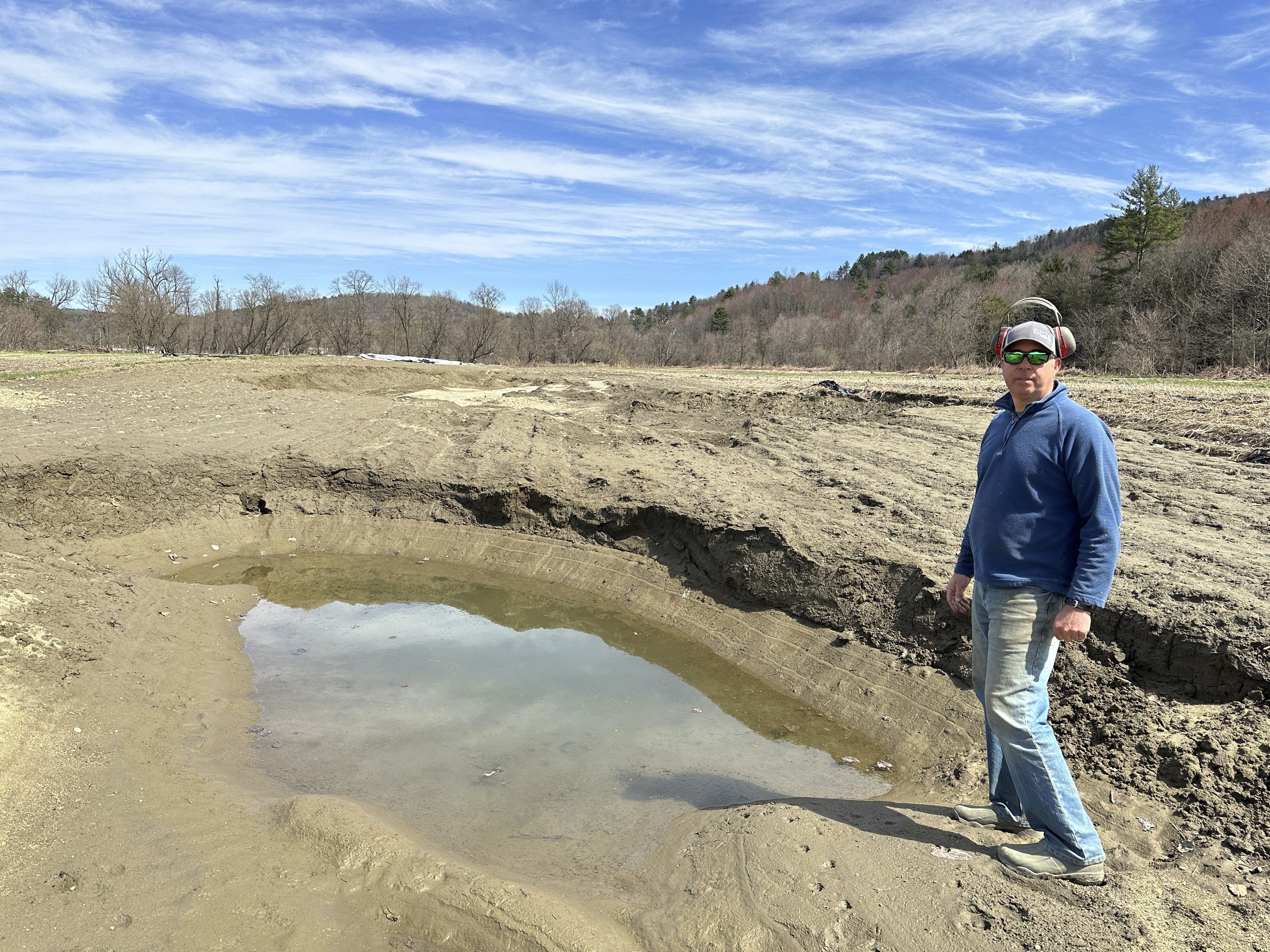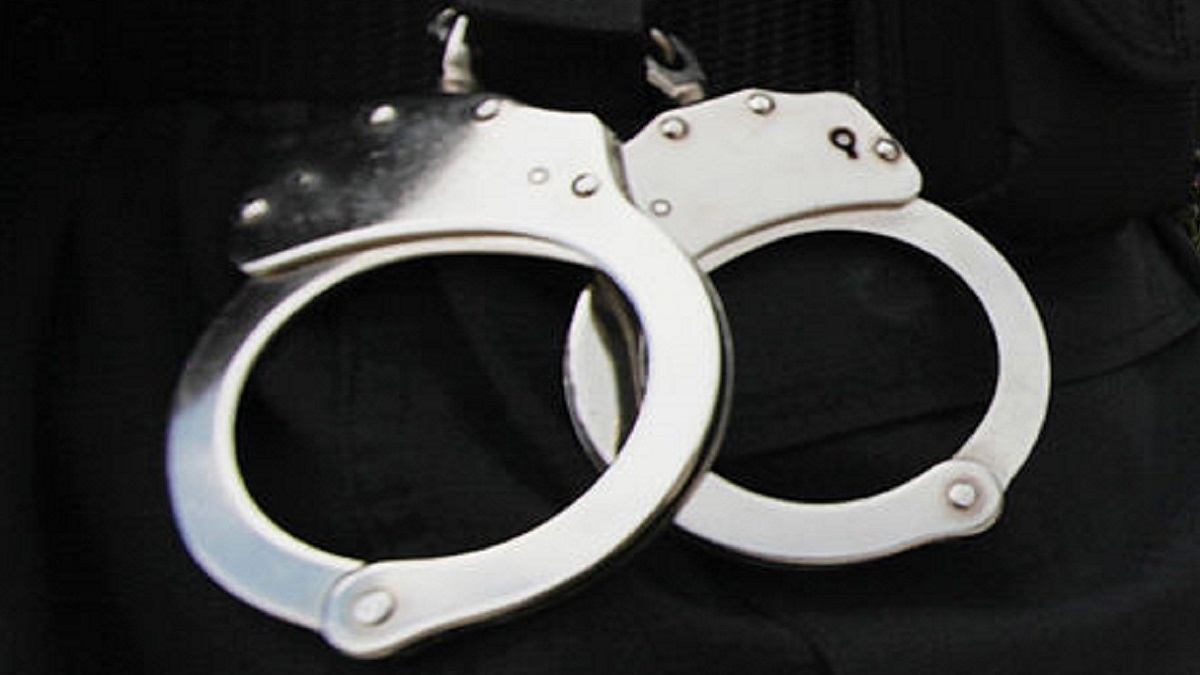Dangerously cold wind chills are in the forecast for the Northeast through Thursday, with the National Weather Service's office in Burlington, Vermont expecting readings as low as 40 below. Air temperatures from 23 below to 10 above zero will combine with 10 to 20 mile per hour winds, with gusts up to 30 mph, the National Weather Service said.
Such extreme cold can create frostbite, hypothermia, or even death, the National Weather Service warned.
In Burlington Wednesday morning, Tony Yasi was making his rounds on his bike. He delivers bread from August First Bakery to area stores and restaurants. "I remember one time last year it was like, negative 5, negative 15," Yasi said. "It just cuts through you."
Yasi said pedaling the bike and getting inside quickly for his stops help him manage the cold most days.
A crew from Vermont Gas was working in the bitter conditions on the University of Vermont green in Burlington. Workers were replacing part of the utility's underground natural gas infrastructure. "They can warm up in the truck; that's fine," Lee Brown, a maintenance supervisor at Vermont Gas, said of his staff. "I wouldn't ask my guys to do anything I wouldn't do."
But Thursday, Brown said the utility is expecting it will be too cold to continue the job. "We will only be out tomorrow in an emergency situation," Brown noted.
In Burlington, when the wind chill makes it feel like 0 or colder, there's no recess at the city's elementary schools, administrators at Champlain Elementary School said. "It's a tough call to make but at the same time, we want to keep the kids safe," said Nancy Pruitt, the school nurse at Champlain Elementary.
Pruitt said the frigid temps are particularly tough on kids with asthma, and can cause a host of other health problems. "I just talked to a colleague at another school," Pruitt told New England Cable News. "She was treating a child for frostbite on the cheeks."
Vermont
The latest news from around the state
For Craig Lague, who was delivering large jugs of Vermont Heritage Spring Water to offices in the Burlington area, lots of warm layers are a must during weeks like this. "You just keep on truckin'," he told NECN. "Dress warm, dress in layers; keep on moving!"
Lague said a good attitude is also key, since he knows what's coming for his job in five or six months. "In the summer, it's really nice," he said, smiling. "You take the good with the bad."
The Vermont Division of Emergency Management and Homeland Security issued the following cold weather preparedness tips:
- Monitor weather reports.
- Be a good neighbor. Check with elderly or disabled relatives, neighbors, and friends to ensure their safety.
- Minimize outside activities, particularly the elderly and very young. Also, consider your pets and limit their time outdoors.
- Dress in several layers of loose-fitting, lightweight clothing, rather than a single layer of heavy clothing. Outer garments should be tightly woven and water repellent. Wear a hat, mittens and sturdy waterproof boots, protecting your extremities. Cover your mouth with a scarf to protect your lungs.
- Excessive exposure can lead to frostbite, which is damaging to body tissue that is frozen. Frostbite causes a loss of feeling and a pale appearance in extremities, such as fingers, toes, ear lobes or the tip of the nose. If symptoms are detected, seek medical help immediately. Slowly warm the affected areas as you await medical assistance.
- Hypothermia can occur in extreme cases. The warning signs are uncontrollable shivering, memory loss, disorientation, incoherence, slurred speech, drowsiness and apparent exhaustion. If the person's temperature drops below 95 degrees, seek immediate medical care. If medical assistance is not available, slowly warm up the person, body core first, wrapping them in a blanket or using your own body heat. Do not warm the extremities first, for this drives the cold blood towards the heart and can lead to heart failure. Do not give the person alcohol, coffee, tea or any hot food or beverage. Warm liquids are best.
- Ensure you have sufficient heating fuel, as well as emergency heating equipment in case you lose electricity. If you need information on heating assistance you can call Vermont 211.
- If you lose power or heat and need a safe place to stay call 2-1-1. 2-1-1 can tell you if any warming shelters have been established in your area or connect you with the Red Cross, which can provide safe shelter to those in need.
- Test smoke and Carbon Monoxide (CO) detectors, and change their batteries regularly. Malfunctioning heating equipment can produce harmful levels of CO, including: fuel-fired furnaces or boilers (nonelectric), space heaters with pilot lights or open flames (for example kerosene heaters, wood stoves, or fireplaces), and gas stoves or ovens - especially those with pilot lights. Cars, snowmobiles, trucks, and other vehicles run in a garage can also be sources of CO poisoning, which can be deadly. Never operate a vehicle or generator indoors; they should only be run be outside and away from the home so CO cannot vent inside living areas.
- If you lose power or heat, try to keep pipes from freezing. Leave cabinet doors around them open to allow as much heat as possible to reach them. Wrap them in insulation or layers of newspapers, covering the newspapers with plastic to keep out moisture. Allow a trickle of warm water (if available) to run from a faucet that is farthest from your water meter or one that has frozen in the past. This will keep the water moving so it cannot freeze. Learn how to shut off your water if a pipe bursts.
- Make sure your car is properly winterized. Keep the gas tank at least half-full. Carry a Winter Emergency Car Kit in the trunk including blankets, extra clothing, flashlight with spare batteries, a can and waterproof matches (to melt snow for drinking water), non-perishable foods, windshields scraper and brush, shovel, sand, towrope, and jumper cables.



